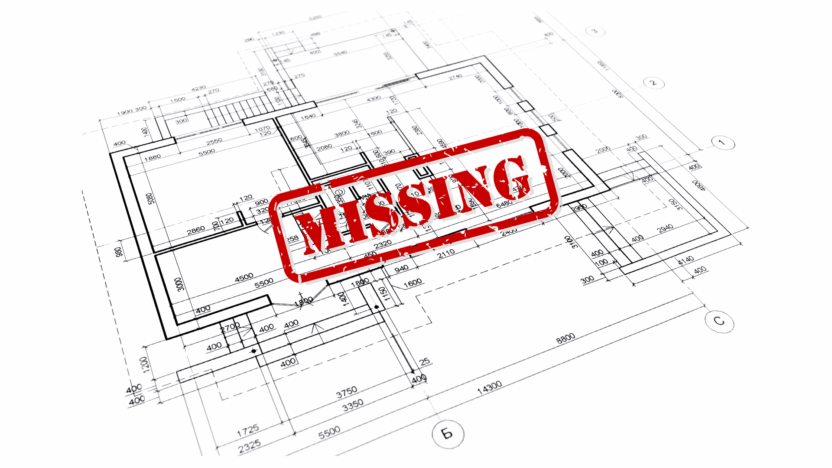The Mystery of the Missing Drawing
On a bustling construction site, civil engineers, construction engineers, and geotechnical engineers work tirelessly, often armed with nothing more than a drawing register and a set of construction drawings. One day, amid the intricate design specifications, precise measurements, and detailed site plans, a critical construction drawing went missing. Imagine the chaos on the project site as civil engineers and other engineers scrambled to track revisions and find the lost drawing. This detective story is not just about a lost document; it’s about the essential role of document management systems, specifically the drawing register, in keeping civil engineering projects on track.
Every civil engineering project—from the design of buildings to complex structures like bridges and tunnels—relies on a robust drawing register to manage thousands of construction drawings. Without a reliable drawing register, even the most skilled professional engineers and construction engineers can face delays, costly errors, and compliance issues. Today, we explore the critical function of the drawing register and drawing log in the realms of civil engineering and construction, and how they are indispensable tools for civil engineers and architects alike.
The Drawing Register in Civil Engineering
A drawing register is a single source for all construction drawings in a civil engineering project. For civil engineers, the drawing register is not just a list; it is the backbone of the document management process. Here’s why:
- Comprehensive Catalogue: The drawing register offers a complete index of every drawing—from electrical drawings and ceiling plans to site plans and drainage systems. This catalogue includes detailed design specifications, revision dates, and version control information.
- Revision Tracking: A robust drawing register enables civil engineers to track revisions effectively. Every change, from the initial construction drawing to the final, approved version, is meticulously recorded. This ensures that professional engineers and other stakeholders always have access to the most current information.
- Approval and Compliance: The drawing register records approvals by civil engineers, construction engineers, and other engineers with a bachelor’s degree or higher qualifications. This documentation ensures that all construction drawings comply with building codes, safety standards, and other regulations.
For civil engineers, maintaining an updated drawing register is time consuming but critical for accurate and safe project execution. This register is used by civil engineers during every phase of civil engineering—from the initial designing stage to the maintenance phase after the project is completed.
Understanding the Construction Drawing Log
While the drawing register provides a comprehensive list, the drawing log is the dynamic record that construction engineers rely on during the active phases of a construction project. The drawing log is updated regularly to reflect track revisions, current statuses, and the version control of construction drawings.
- Dynamic Updates: The drawing log is often seen as a more dynamic version of the drawing register. It is actively updated to show the latest changes, approvals, and distribution of construction drawings.
- Active Management: In a construction site, where civil engineers are constantly designing and updating site plans and construction drawings, the drawing log ensures that every construction drawing reflects the latest design specifications and precise measurements.
- Real-Time Version Control: The drawing log plays a crucial role in version control. It helps civil engineers and construction engineers ensure that the right drawing version is in use on the project site. This is essential to avoid costly mistakes and ensure compliance with safety standards and building codes.
For civil engineering projects, both the drawing register and drawing log work in tandem, providing civil engineers and other engineers with a reliable system to manage, update, and distribute construction drawings. This system is especially crucial when working with geotechnical engineering data and electrical drawings on complex projects such as coastal engineering structures or large urban developments.
Curious how you can streamline your drawing submissions? BuildTwin’s intuitive platform lets you drag and drop your Excel file to create a comprehensive drawing register instantly. Explore the platform to see how effortless document management can be!
Key Elements of a Drawing Register/Log
A well-managed drawing register must capture a wide array of details to be effective. Below is a table outlining the key elements that civil engineers and construction engineers should include:
| Data Point | Importance for Civil Engineering and Construction |
|---|---|
| Drawing Number | Unique identifier for each drawing, critical for version control and tracking revisions in construction drawings. |
| Drawing Title/Description | Provides a clear description, such as site plans, ceiling plans, and electrical drawings. |
| Revision Number/Letter | Helps civil engineers track revisions and changes, ensuring that construction drawings are always up-to-date. |
| Revision Date | Records when changes were made, essential for document management and version control. |
| Status | Indicates the current state (e.g., “Issued for Construction,” “Approved,” “Superseded”), ensuring construction engineers know which drawings are valid. |
| Original Issue Date | Provides historical context and verifies that all civil engineering documents have a recorded timeline. |
| Latest Revision Date | Ensures the drawing register reflects the most current design specifications and precise measurements. |
| Specification Section Reference | Links the drawing to the relevant building codes and design specifications. |
| Discipline | Categorizes drawings (e.g., Civil, Structural, Architectural, MEP, Geotechnical Engineering) to assist civil engineers in filtering information. |
| Scale and Sheet Size | Critical details for interpreting construction drawings accurately. |
| Location | Indicates digital file paths or physical storage locations, essential for efficient document management. |
| Transmittal History | Records who has received the drawing and when, vital for tracking revisions and approval processes. |
| Distribution List | Lists all civil engineers, construction engineers, and other stakeholders who have access to the drawing. |
Each of these elements is crucial for civil engineering documentation. They provide civil engineers with all the other details needed for efficient document management and ensure that construction drawings are correctly updated, approved, and distributed across the project site.
Basic parameters that a drawing register contain:
- Drawing Number: Unique and essential for version control.
- Revision Details: Critical for tracking revisions and updates.
- Approval Status: Ensures compliance with safety standards and regulations.
- File Location: Key for quick retrieval on any construction site.
Benefits for Civil Engineers and Construction Projects
Maintaining a detailed drawing register and an updated drawing log brings numerous benefits to civil engineering and construction projects. These benefits are not only essential for document management but also for ensuring safety, compliance, and overall project efficiency.
Centralized Documentation
- Single Source of Truth: The drawing register consolidates all construction drawings into one comprehensive list, providing civil engineers with a reliable resource.
- Easy Retrieval: With a centralized document management system, civil engineers and construction engineers can quickly locate site plans, ceiling plans, and other drawings.
- Consistent Version Control: Regular updates help track revisions so that every construction drawing reflects the latest changes.
Enhanced Communication and Coordination
- Improved Collaboration: The drawing register and drawing log ensure that civil engineers, construction engineers, geotechnical engineers, and architects are all on the same page regarding design specifications and revision details.
- Stakeholder Alignment: Clear documentation of approval, revisions, and distribution lists fosters smooth communication between professional engineers and other stakeholders.
Efficiency and Reduced Errors
- Minimized Mistakes: When civil engineers have access to the latest construction drawings, there is a lower risk of using outdated versions, which in turn minimizes construction delays and errors.
- Streamlined Processes: A well-maintained drawing register reduces the time consuming nature of manually searching for construction drawing updates.
- Audit Trail: A detailed drawing log provides a comprehensive history of changes, ensuring that all civil engineering projects comply with regulations and building codes.
Cost Savings and Compliance
- Reduced Rework: Proper version control and track revisions minimize the risk of errors that lead to costly rework.
- Regulatory Compliance: Detailed documentation supports compliance with safety standards, fire protection, and other regulatory requirements essential for civil engineering.
- Enhanced Accountability: Every change is recorded, making it easier for civil engineers and professional engineers to ensure accountability across the project.
Best practices:
✅ Centralized Records: One reliable drawing register for all construction drawings.
✅ Accurate Revisions: Consistent version control and track revisions system.
✅ Efficient Communication: Keeps civil engineers, construction engineers, and geotechnical engineers aligned.
✅ Cost and Time Savings: Avoids mistakes and reduces the time consuming process of manual tracking.
Ready to simplify your document management? Discover BuildTwin’s advanced platform that integrates effortlessly with your drawing register workflow. See it in action
Best Practices for Managing Drawing Registers and Logs
For effective document management in civil engineering, a few best practices should be followed by civil engineers, construction engineers, and geotechnical engineers:
Establish a Standardized Drawing Numbering System
- Consistent Format: Develop a uniform system that assigns a unique number to every construction drawing. This is vital for version control and track revisions.
- Ease of Identification: A clear numbering system makes it easier for civil engineers to identify other details like site plans, electrical drawings, and ceiling plans.
Define Clear Update Procedures
- Responsibility Assignment: Clearly establish who among the civil engineers or construction engineers is responsible for updating the drawing register and drawing log.
- Regular Audits: Conduct periodic audits to verify that every construction drawing has been updated, and all revisions are correctly recorded. This is essential for compliance with building codes and safety standards.
Control Access to Documentation
- Restricted Editing: Limit the editing rights of the drawing register to ensure that only authorized civil engineers or professional engineers can make changes.
- Digital Security: Use password protection and user roles for digital document management systems to safeguard against unauthorized modifications.
Integration with Other Systems
- Link to Transmittals and RFIs: Integrate the drawing register with transmittal history and Request for Information (RFI) systems to provide a complete overview of document management.
- Software Solutions: For large-scale construction projects, consider using dedicated software tools (like BuildTwin, DWG Register or Sage Construction Management) that facilitate track revisions, version control, and real-time updates.
Best Practices:
| Practice | Benefit for Civil Engineering |
|---|---|
| Consistent Numbering System | Simplifies identification of each construction drawing and supports effective version control. |
| Clear Update Procedures | Ensures accurate track revisions and minimizes the risk of using outdated drawings. |
| Controlled Access | Protects the integrity of the drawing register and ensures that only qualified civil engineers update the system. |
| Integration with Other Systems | Enhances overall document management and facilitates communication among civil engineers, construction engineers, and other stakeholders. |
| Use of Dedicated Software | Streamlines the process, reduces the time consuming nature of manual updates, and improves compliance with safety standards. |
Conclusion
By embracing a comprehensive drawing register and maintaining an actively updated drawing log, civil engineers and construction engineers ensure that every detail—from site plans and ceiling plans to drainage systems and electrical drawings—is meticulously recorded, tracked, and approved. These tools not only organize the myriad of construction drawings but also empower civil engineers, construction engineers, and geotechnical engineers to track revisions and maintain precise version control. Transform your drawing management today! Explore BuildTwin’s cutting-edge Drawing Register module to streamline task creation, status updates, and file version control. Explore the platform now >>
Book your Demo with BuildTwin Success Advisor


